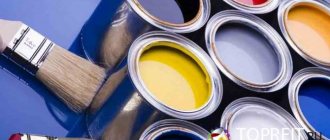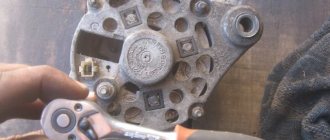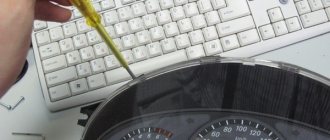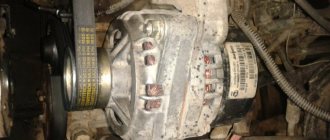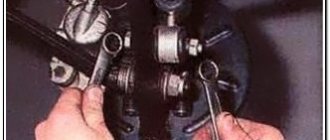Silicone holders are very popular because they are convenient and practical. Tile is one of the most common materials for decorating a room. Especially often, tiles are used to decorate the walls and floors in the bathroom or kitchen. In these rooms, it is convenient to use silicone wall holders to attach various objects to the wall. Several reliable methods will help you secure the suction cup so that it holds tightly to the wall and does not leave an unsightly mark after dismantling. Silicone holders can be used in different rooms, but most often they are attached to the tiles in the bathroom.
Benefits of tile suction cups
Suction cups are incredibly popular among consumers. This is understandable because they are easy to mount on the wall and do not require drilling any holes in the tiles. Many products are already produced with Velcro.
The reliability of attaching Velcro to the wall depends on the quality of the materials from which they are made.
When purchasing, you should pay attention to the surface of the suction cup - its inner surface should be absolutely smooth. This factor is very important, as it decides whether the suction cup will be suitable for attachment. You should also choose only suction cups of the correct shape.
The advantage of silicone holders is that they are easy to mount on the wall
Advantages of suction cups:
- They are quickly attached to the surface, without the need to use auxiliary tools.
- They do not spoil the tiles with unsightly marks on its surface.
- They are distinguished by their mobility. They are easy to dismantle and move from place to place.
- The low cost allows you to purchase various types of suction cups.
With suction cups already attached, you can buy a soap dish, special hooks, shelves, shower holders, various accessories, toilet paper holders, etc. Silicone suction cups are durable, economical and have a wide range of options. When purchasing a suction cup, it is important to remember that not only the quality of the accessory is important, but also the type of finishing material.
Related article: Glazing of balconies and loggias - types of glazing and installation technology
Glue "Moment"
If the tape and suction cups cannot withstand the necessary loads, use Moment glue. Apply a layer of glue to the wall and wait 10 minutes for the hook, then press it firmly to the wall. After 24 hours the grip will be at its maximum.
If you use glue in the bathroom, pay attention to whether the fastening will be strong in rooms with high humidity
In addition to the proposed methods, various types of glue can also be quite effective - epoxy, super glue, liquid nails. The main thing is to understand what the humidity is in the room, the load on the hook, and how to dismantle it if necessary. You can fasten metal hooks into the gaps between the tiles - a blank in the shape of the letter T is made from stainless steel 1 mm thick, the length of the “top crossbar” is 15-20, the “legs” are approximately 25-30 mm, the width is 5. The seam is cleared with a piece of a hacksaw, the crossbar is inserted into a horizontal seam, covered with joint compound, after drying, the end is bent upward with a hook. If necessary, you can pick out and rub the seam again. The advantage is that no marks remain. Withstands more than 5 kg. What methods do you use to hang heavy and not so heavy objects?
How to attach a suction cup to tiles: methods of attachment
To securely attach the suction cup, you need to be confident in the quality of the material from which it is made. If even the slightest roughness is found on the suction cup, this may indicate that the material was manufactured using the wrong technology. Such suction cups often come off, which creates great discomfort for the owners.
Before purchasing Velcro, it is important to pay attention to the quality of the tile itself. It will not be possible to attach Velcro to embossed tiles.
Velcro adheres best to tiles with a glossy surface. The matte surface has pores that weaken the Velcro fastening. It is not advisable to attach Velcro to raised protrusions, tiles with various defects, or to glue particles - all of them will contribute to the suction cup coming off. It is important that there are no chips or cracks on the surface of the tile.
There are several ways to attach the suction cup to the tile, which you can choose at your discretion.
Mounting methods:
- Use alcohol to degrease the tile surface.
- Apply Vaseline or other similar products.
- Place PVC film, which has a self-adhesive backing.
- Strengthen the suction cups with silicone sealant.
The choice of method depends on what object the suction cups will hold. The weight and dimensions of the product should be taken into account. It is important to remember that in order to securely attach the suction cups using any of the methods, you must first thoroughly clean the surface of dirt.
Thorough cleaning
Now you need to inspect the windshield. Of course, it should be washed thoroughly, since any microparticles (dirt, dust, hairs, glue particles, and so on) prevent the ejection of air and the normal attachment of the suction cup.
The glass should not only be washed, but also degreased, since invisible fingerprints and other greasy contaminants may remain on it. For degreasing you can use:
- glass cleaner;
- nail polish remover;
- chlorhexidine;
- medical alcohol;
- any alcohol-based product.
We suggest you read: How to attach suction cups to tiles
Be sure to also degrease the suction cup itself, as it may get dirty on your fingers.
How to attach a suction cup hook to tiles
Suction hooks are a very practical accessory. But its practicality can only be guaranteed if the vacuum suction cup is properly attached. An important factor is the type of tile and its condition.
Before purchasing hooks, it is important to determine their type and size; to do this, you need to know exactly what objects it will hold.
In order for the suction cup to attach to the tile, it is important to treat not only the tile, but also the internal silicone surface of the suction cup with alcohol. Using Vaseline, cream or plain water often helps to improve adhesion between surfaces. But before attaching Velcro to the cracked tile, its surface must be restored.
Related article: How to create a luxurious living room interior with your own hands?
Before gluing the suction cup to the wall, you should first thoroughly clean the surface
Tip for attaching the hook to the suction cup:
- Degrease the surface. This method is suitable for holding objects of small weight and size on a hook. It is important that the surface is completely free from dust, dirt, plaque, rust, grease, soap, etc. After all the manipulations, the suction cup can be firmly pressed against the tile - this is enough for it to firmly attach to the surface.
- Use Vaseline. It improves the quality of adhesion between silicone and tiles. This method is completely safe, as it involves the use of environmentally friendly materials.
- Fastening with PVC film. If heavier objects will be placed on the hook, it will be useful to know about this method of fastening. To do this, cut a circle of suitable diameter from the film. The self-adhesive is attached to the casting, and a suction cup is already attached to it - it must coincide with the contours of the film.
- For significant loads, silicone sealant is used. With its help, two surfaces are firmly connected to each other. The sealant is easy to clean without damaging the tile surface.
The last method is the most reliable if the hook is not going to be moved often. To do this, the back of the suction cup is usually lubricated with sealant, then firmly pressed against the wall. Do not immediately hang the hook. In order for it to attach securely, it must be left to dry for a day.
How to securely secure a soap dish
The soap dish, like other parts of the bathroom interior, may also have a fastening in the form of one or more Velcro. Since a soap dish is used more often than a hook or shelf, it is especially important to secure it so that it does not fall. To answer the question, you can simply look at the previous methods. Try first, before attaching the soap dish to the wall, moisten it with water and degrease the tiles with soap. If this method turns out to be unreliable, use silicone gel. This approach will certainly ensure the durability and aesthetics of your soap dish.
Methods for attaching silicone Velcro
Many people think about what will happen if they stick silicone Velcro on a tile, and how long it will last. This can be done in different ways - this will determine how long the Velcro will last. Silicone adheres well to the surface of the tile, but there are nuances in which the Velcro may fall off.
Chewing gum that is not attached to anything may fall off when the temperature or humidity in the room changes.
It is especially important that the Velcro sticks tightly in the bathroom, where there is always high humidity. You can make a more reliable fastening using silicone sealant. It is important to decide in advance what will hang on the hook. For example, one type of Velcro is used for towels, and another for a hairdryer.
Related article: DIY folding wooden chair: materials, assembly technology
You can easily attach the silicone holder using sealant
Sealant mounting method:
- Take a transparent sealant.
- The surface of the suction cup and the place where it will be attached should be degreased with alcohol.
- Apply a thin layer to the inner surface of the suction cup.
- Press the suction cup firmly onto the tile.
- If necessary, sealant that has come out beyond the edges of the suction cup can be removed with a spatula.
The disadvantage of this method is that the suction cup becomes disposable. It will not be possible to attach it to a new place. But it will last quite a long time, although the reliability of fastening and the timing depend on the quality of the tile and the level of humidity in the room. You should not use glass sealant as it will look unsightly.
The nuances of installing mirror elements in bathrooms
To ensure a high service life of the mirror and user safety during installation, some nuances should be taken into account:
- type of enclosing/dividing structure - concrete wall, plaster or plasterboard on a profile frame;
- weight, dimensions of the mirror element;
- reflection angle - the mirror can be placed in the same plane with the wall, its upper edge can be tilted outward, and hinged fasteners can be used to provide several degrees of mobility.
Concrete walls and plaster under a layer of tile adhesive have high strength and, accordingly, load-bearing capacity. Plastic dowels for self-tapping screws and anchor hooks are held securely in them. Standard installation technology is used here - drilling, driving in dowels, screwing in hardware.
On drywall covered with tiles, which has normal load-bearing capacity but is extremely thin, a special plastic or metal anchor will help you hang a mirror element, as in the bottom photo.
Heavy reflective sheets are best fixed with holders, through holes drilled through with self-tapping screws, or glued to a neutral sealant. For lightweight, small-sized mirrors, you can use the other mounting methods indicated in this manual.
If you are a master, follow this link, register in the system and be able to accept orders.
What are silicone wall holders (video)
Silicone Velcro are modern holders that ensure reliable and secure fastening. If done correctly, suction cups can last for many years. It is important that the material from which they are made is of high quality. You should check that there are no roughness or bumps on the surface of the Velcro. You should also pay attention to the surface of the tile itself - it should be smooth. Any defects will lead to the fact that the suction cup will not hold and will often fall off. The suction cups hold well if they are attached to the sealant.

